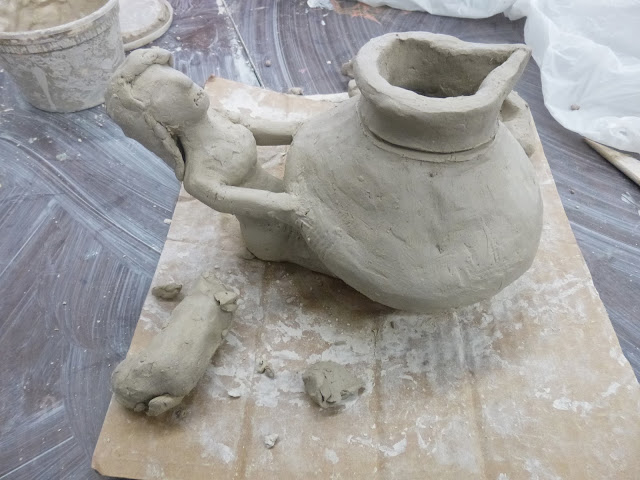
First, students looked at images of pottery from around the world and learned ceramic terminology such as slip and score and bisqueware. Next, they learned how to build using coils. Each student drew an image in their sketchbook for a piece of pottery they would like to make. They also cut a template out of cardboard that would act as a guide to creating the overall form/shape they desired.

Students then used the coil building method and their template, to create vessels out of clay. Beginning with a vase, they slipped and scored each coil to the next one.


Once the overall shape was achieved, the students were asked to include at least one additive feature and one subtractive feature. We looked at images of additive and subtractive features, and the students decided whether to add handles, feet, lids or another design feature. Each solution was unique and the students thoroughly enjoyed working with clay and with their hands to create a functional work of art.



As a form of critique, the students went around once the pottery was complete, and offered feedback and complements to their peers.

 |
| This student made a vessel that is a bathtub! |

Finally, thanks again to Ms. Moore and Ms. Beeman, each artist was able to glaze their pottery in the ceramics classroom, and they were fired in the kiln on time for the holidays.
 |
| Students test whether their vessels hold water as they toast to their success! |









































